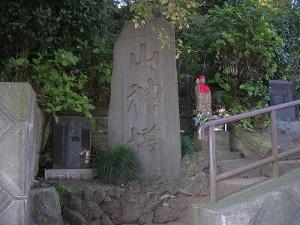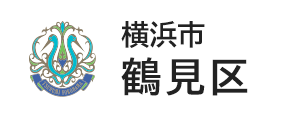現在位置
- Yokohama-shi Top Page
- Tsurumi Ward Top Page
- Introduction of the ward
- Overview of Tsurumi Ward
- History of Tsurumi Ward
- 22nd: Tsurumigaoka Hill Looking back past and present
Last updated on July 9, 2024.
The text is from here.
22nd: Tsurumigaoka Hill Looking back past and present
In November 1872, a government official visited the office of Tsurumi Village's name, Sakuma Gonzo, saying, "I want you to guide you to the place where you can see Mount Fuji in Tsurumi Village." I was not sure what kind of person was, but feared of the arrogant word, Shozo Kurokawa, the secretary at the office, guided me to the hill west of Tsurumi Station Stop. When we reached the middle of the grave mountain slope where the graveyard of Joganji Temple was located, we heard the sound of a train from Kanagawa. The officials turned back and saw the train stopped at Tsurumi Station, and said, "Oh, this slope looks back at the train and is a slope." At the top of Mt. Tomb and the direction of To Terao Village, where I could see Mount Fuji many times, I looked at the male figure of Fuji, and on the way back, asked Kurokawa Sozo about agriculture. When I returned to the station, I presented a self-written business card that was made into a letter paper of about 4 inches long and 1 inches wide. When I received it, he said, "Army Shosuke Saigo", so I was convinced who he was. In response to the news that a train arrives from Kanagawa, I bought a ticket myself, made a ticket gate, climbed the railroad track to the platform, waited for the train in the field without a place to sit down and no rain cover, and got on the train because the train came Was.
Sozo Kurokawa consulted with Sakuma Gonzo at a later date and decided to name `` Tombyamazaka '' that everyone hated, `` Tombyamazaka '', which was said by Mr. Saigo, and consulted with the village officials at that time. , I was very much supported. However, it was very difficult to change the name that was called, and we notified the village, but many of them took the old name of Tombyamazaka. Tsugumichi Saigo, who looked at Mount Fuji, is said to have lived in later years on a hill called Shinfuji in Azabu Hiroo, Shimo-Ebara-gun, Tokyo. The business card received from Tsugumichi Saigo was cherished by Sozo Kurokawa, but it was burned down during the Tsurumi Fire on March 31, 1910.
The above is written in "Chigusa" written by Sozo Kurokawa. On October 17, 1924, Shozo Kurokawa built a concrete "memorial slope monument" with his friend Kenjiro Kikkawa in hopes of conveying the origin of this historic turning hill for a long time. The monument was built in front of the Kikkawa family on the opposite side of Joganji Sanmon, but the descendants of Kenjiro sold this land to Sumitomo Life in 1964 and relocated to Kitaterao. Was moved from the bus street on Tsurumi and Shishigaya Road to the entrance of the slope that climbs Sojijiji Temple. The concrete monument currently built by Sozo Kurokawa and Kenjiro Kikkawa has been damaged and has been rebuilt as a fine black granite monument.
The remaining pieces of the old monument stand quietly behind the new monument, "Nishi-Mikanashi Bando Returnzaka" in front of the old monument. On the right side, "Nakasaka Tennoinzaka, □□zaka, Oike, Kumano Shrine, Inariyama, Suwazaka, Armor Pond, People's Flowerbed, Nihongi Fudo, Shirohata Shrine, Matsukage Temple, Satomi Yoshitaka Entrance Tomb, Kenko-ji Temple, Buddhist Suzen Master's Tomb ". On the left side, "New and Old National Highway, Tsurumi Station, Joganji Temple, Kosei Kannon, Kagetsuen, Hachimanyama, Hanakoen, Tsurumi Shrine, Tsurumi So Mochidera, Temakurazaka, Anyoji, Mikasa-en, Takisaka Fudo, □□□□, Shiomibashi, Sugiyamagishi Shrine, Shosenji Temple and Keisenji Temple. Regarding the waka and Haiku engraved on the back, the late Sukeo Mochimaru, who pioneered the study of local history at the Terao Local History Society, the predecessor of the Tsurumi History Society, said, "Japanese grass is also a mountain's end-of-life Tanhi (Tsubanihi), Ushishi and Higashi-Mikashi no Saka, and Higashi-Mikashi-so are interpreted as Tsurunaka-so. On the other hand, Mr. Tsukasa Okuma, the first chairman of the Tsurumi History Society, said, `` Japanese grass becomes the autumn leaves of the mountains, and the west and east are the hills and Tsuruen, '' `` Shinonome's Shirube stone with Kuzu no Hana, Kanemoto '' It has been interpreted. At the stage when Mr. Mochimaru was surveyed (from the 1940s to the 1950s), the monument seemed to have been almost complete. A photograph (copy) of the monument in complete shape is also attached to the notebook left by Mr. Mochimaru. At the time Okuma deciphered, the monument was damaged by building construction and road maintenance, etc., and only a part of it was left, and Mochimaru confirmed that `` Hanakaen, People's Flowerbed, Kenko-ji Temple There is no Buddhist priest's grave. In the section of "Chigusa", which was left behind by Sozo Kurokawa, the term "Original Slope" states, "Climbing the Asahi of Urara-Kaki-Aki-no-Aki-no-Slope-Slope-Slope-Slope-Slope-Slope-Slope-Slope-Slope-Slope-Slope-Slope-Slope-Slope-Slope-Slope" in Chigu-Slope-Slope-Slope-Slope-Slope" written by Sozo" in Chigus-Slope-Slope-Slope-Slope-Slo-Slope-Slope-Slope-Slo-Slope-Slope-Slope-

Old Tsurumi Station

Yamagami Tower
There is a large monument of "Yamagami Pagoda" near the monument on the back hill. On the back of the monument, `` The excavation work at Mt. Tomb, the biggest difficulty in road construction on the Tsurumi-Mikogaya Line, which was built by the Tsurumi Cultivation Land Association in October 1920, was hit by heavy rain and large winds. It took eight months, and it was a major work rarely seen in the prefecture. However, there was no death due to the protection of the gods. In order to remember this benefit forever, a mountain god tower was built to thank Yamagami for the blessings of Yamagami and memorialize the grave mountain. "
The "Yamagami Pagoda" was built by the Tsurumi Arable Land Management Association.The union president is Gonjiro Hirasawa, the deputy director is Gonzo Sakuma, and the councilor is Tsurumi's leading people at the time, such as Shigezo Nakanishi and Keisuke Mochimaru. I have. Yoshiharu Amano, who wrote the title of "Yamagami Pagoda" and named at the end, is a civil engineer who came to Tsurumi at the invitation of Hirotaka Hiraoka, who opened Kagetsuen, Taisho elementary school student Amusement Park. He was responsible for the construction of facilities at Kagetsuen, and was also entrusted with the excavation of roads at Tomb Mountain and the construction of roads from West Exit Tsurumi Station to Kagetsuen. Yoshitaro, the eldest son of Yoshiharu Amano, made a fortune with Kagetsuen's specialty child-rearing buns and Amano-type pumps, started a business in South America, conducted an excavation survey of Inca civilization, and established the Amano Museum in Peru. It is the person who created it.
He went to South America in 1929 and held Amano Shokai in Panama, exported Panama caps that were popular in Japan to Japan, succeeded in handling Japanese ukiyo-e, postcards, ceramics, etc., and expanded them to department stores, opened farms in Chile, and continued excavations of the ancient Inca civilization.
Yoshitaro was also an engineer who graduated from an industrial school in Akita, and after traveling to South America, he designed his own luxurious tuna fishing boat Amano Maru equipped with modern equipment and made huge profits. He was an attractive person. As you follow the monument of the monument on the back hill, the scenery of Tsurumi in the distant past, the people who tried to convey the scenery, and the people who spun dreams in Tsurumi come out.
In 1920, the Tsurumi-Mikogaya Road was also cut down, and the road continued east and west, making it easier to travel to and from neighboring villages. With such a feeling of joy, it is probable that Sozo Kurokawa and Kanejiro Yoshikawa built a monument to the hill. Around 1924, when this monument was built, it must have been overgrown with kudzu leaves in the backhill area. As if you recall the scenery of the time, Kuzu leaves still flourish on the bank on the northern slope of Sojijiji Temple. The small slope leading to Sojiji Temple from the place where the return hill and the mountain shrine tower are located is a path where the fallen leaves are gentle on the feet, reminiscent of the scene when Sozo Kurokawa guided Tsugumichi Saigo.
※Tsugumichi Saigo (1843-1902)
Military personnel and politicians. He has served as Minister of the Navy and Minister of Internal Affairs and Communications. Naval general, Marshal, Duke and Elder. My brother is Saigo Takamori
Inquiries to this page
Tsurumi Ward General Affairs Department Ward Administration Promotion Division
Phone: 045-510-1680
Phone: 045-510-1680
Fax: 045-510-1891
E-Mail address tr-kusei@city.yokohama.lg.jp
Page ID: 965-309-121













